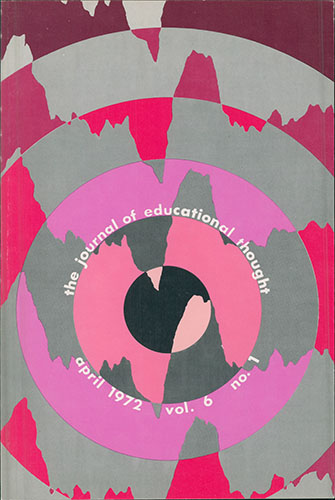The Open Area School and Independent Study
DOI:
https://doi.org/10.11575/jet.v6i1.43582Abstract
The open area concept and independent study are recent innovations in a growing number of schools. Like most innovations, there is little theory backing their acceptance. A good, brief overview of the thinking behind the open concept school, as interpreted in this paper, is provided in A Day in the Life: Case Studies of Pupils in Open Plan Schools. The words 'open plan' seem to have a number of interpretations in the literature - from free schools to outdoor education. My concern is with that 'openness' which is based on a large, wall-less space within the school building. Similarly, there are many articles on 'independent study in Education Index; most, however, are about audio-visual,
library, and programmed instruction activities, and are not concerned with an independent study environment as developed here. Much of this literature speaks of the concern over group conformity and the need to 'individualize' some aspects of the school program. These programs are concerned with subject content and the training of the student's research techniques. These are useful articles for gaining ideas for setting up programs, but my purpose is to take these theories of learning that large open areas aid the learning process, and that learning is promoted in an independent study situation - and develop them strictly from the viewpoint of the effects of the two different environments on the learning process.
Downloads
Published
Issue
Section
License
The Journal of Educational Thought retains first publication rights for all articles. The Journal grants reproduction rights for noncommercial educational purposes with the provision that full acknowledgement of the work’s source be noted on each copy. The Journal will redirect to the appropriate authors any inquiries for further commercial publication of individual articles. All authors wishing to publish in JET will be asked to fill in and sign a Consent to Publish and Transfer of Copyright agreement.
Authors must affirm that any submission to JET has not been and will not be published or submitted elsewhere while under considration by JET.

